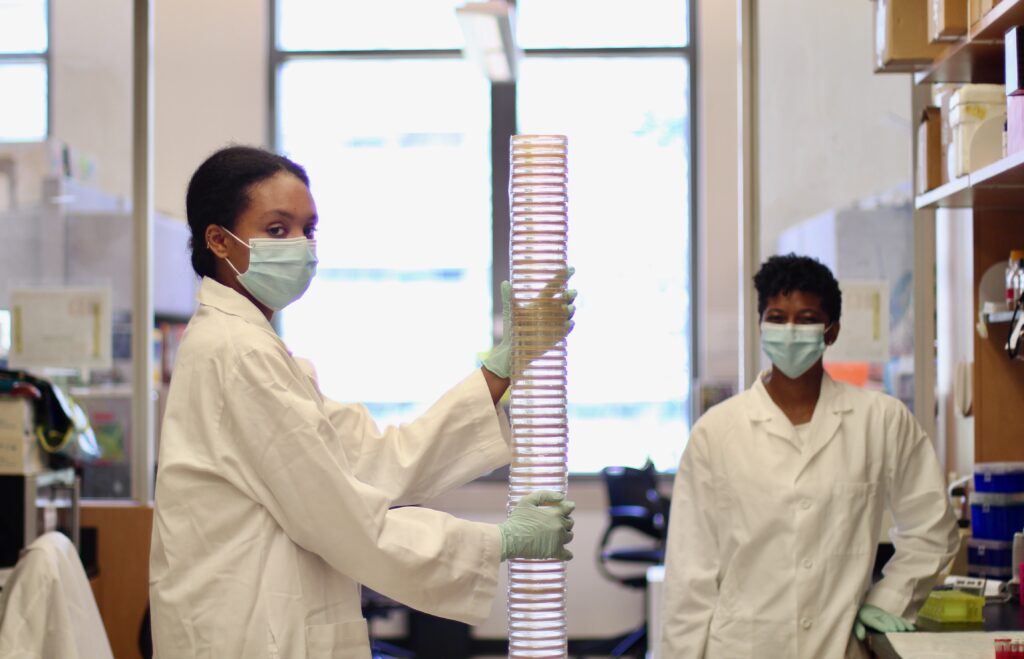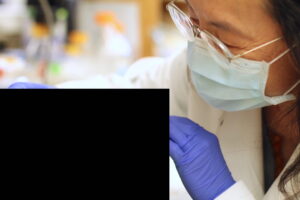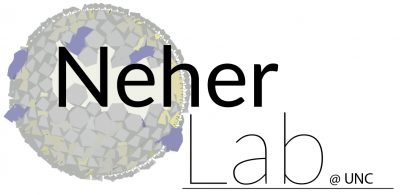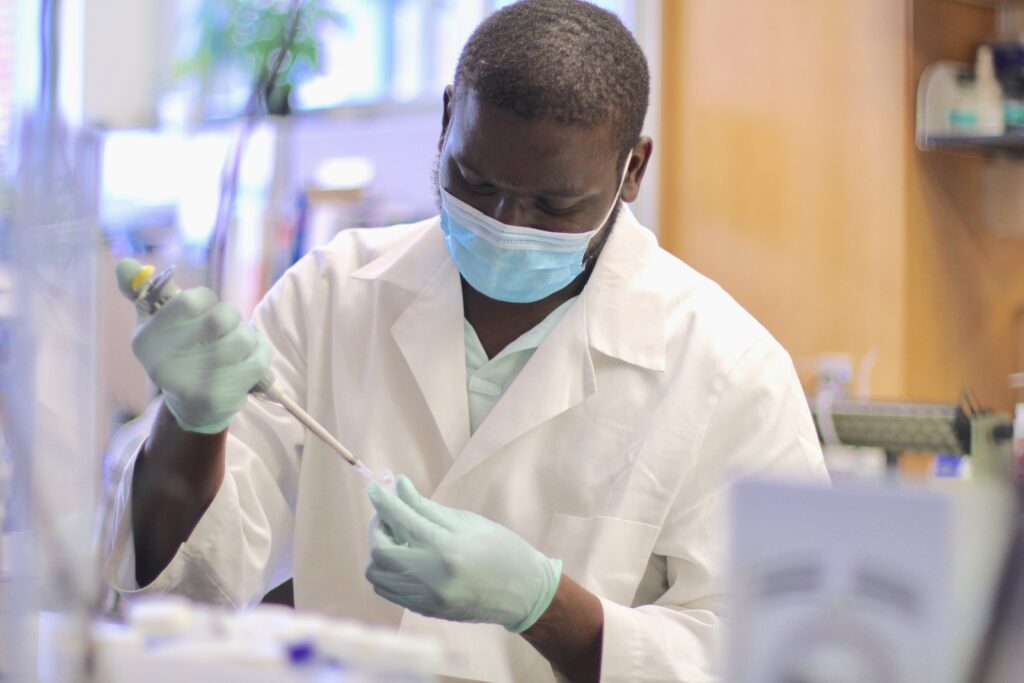Research
We use enzymology, structural biology, and molecular biology to study the lipases that regulate lipid levels. We study these lipases from their synthesis in the ER to their regulation in the blood. Here are some projects that we are working on: |
||

Kathryn Gunn operates the FEI Tecnai 12 transmission electron microscope. |
Mechanistic Studies of LPL InhibitorsLipoprotein lipase (LPL) activity is inhibited by the ANGPTL family of proteins, specifically ANGPTL3, ANGPTL4, and ANGPTL8. Genetic loss of ANGPTLs results in more active lipases and lower triglycerides. Regulation of the ANGPTL proteins is nutritionally-responsive and tissue specific. We study the structure and mechanism of ANGPTL-family protein inhibition of LPL with the goal of blocking these interactions to enhance lipase activity and lower plasma lipids. |
|

Najla Ward-Conyers (left) and Nikea Pittman (right) show us a piece of their project. |
Lipase Folding in the ERLPL and related lipases require an ER membrane protein, LMF1, to in order to properly fold and exit the ER. We discovered that loss of LMF1 affects redox homeostasis in the ER and enhances aggregation of LPL due to improper disulfide bonds. We are studying the structure and function of LMF1, as well as bacterial proteins in the same superfamily, to understand its mechanism of action. |
|

Ming Jing Wu checks in with [REDACTED]. |
Studies to Improve LPL Function and StabilityLPL is an important therapeutic target that could be delivered to LPL-deficient individuals as a protein or gene therapy drug. We have undertaken studies to enhance its function. We discovered that the gain-of function mutation, LPLS447X, enhanced remnant lipoprotein uptake to a greater degree than LPL. We also revealed ways to enhance LPL production for use as a protein therapeutic. Finally, we have worked with Gary Pielak’s lab to determine if desiccation tolerance proteins from water bears could stabilize LPL for long-term storage. |
|
|
Uriel Jean-Baptiste makes a dilution for an experiment. |
Regulation of LPL Synthesis and TraffickingLPL activity is regulated by extracellular signaling events. For example, insulin is important for the production and regulated trafficking of LPL. Using adipocytes, we are investigating the trafficking routes and signaling mechanisms involved in normal LPL activity. Using high resolution microscopy and proteomics, we’re exploring the transport of LPL in the tissues that produce it. What does LPL trafficking look like? |
|

